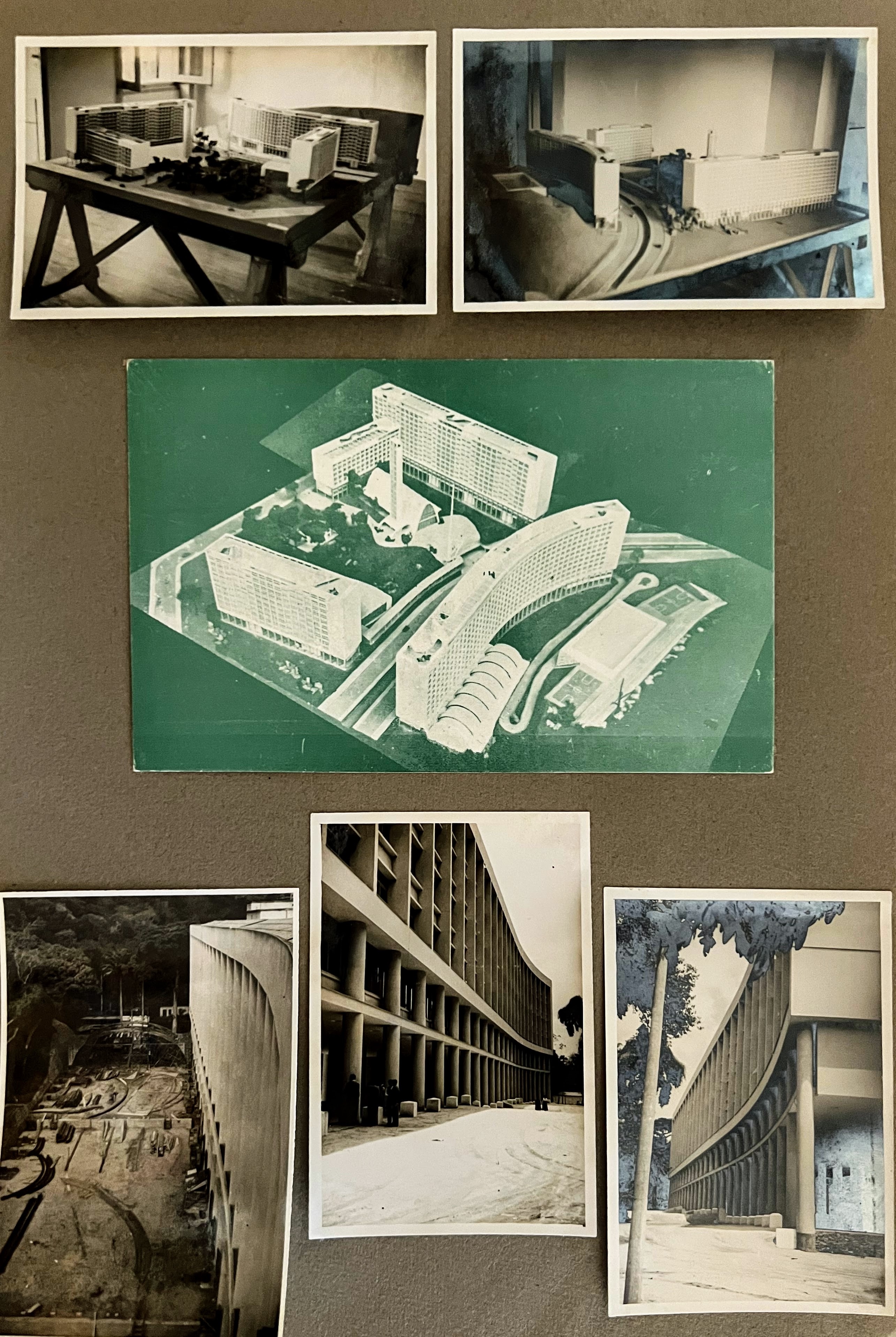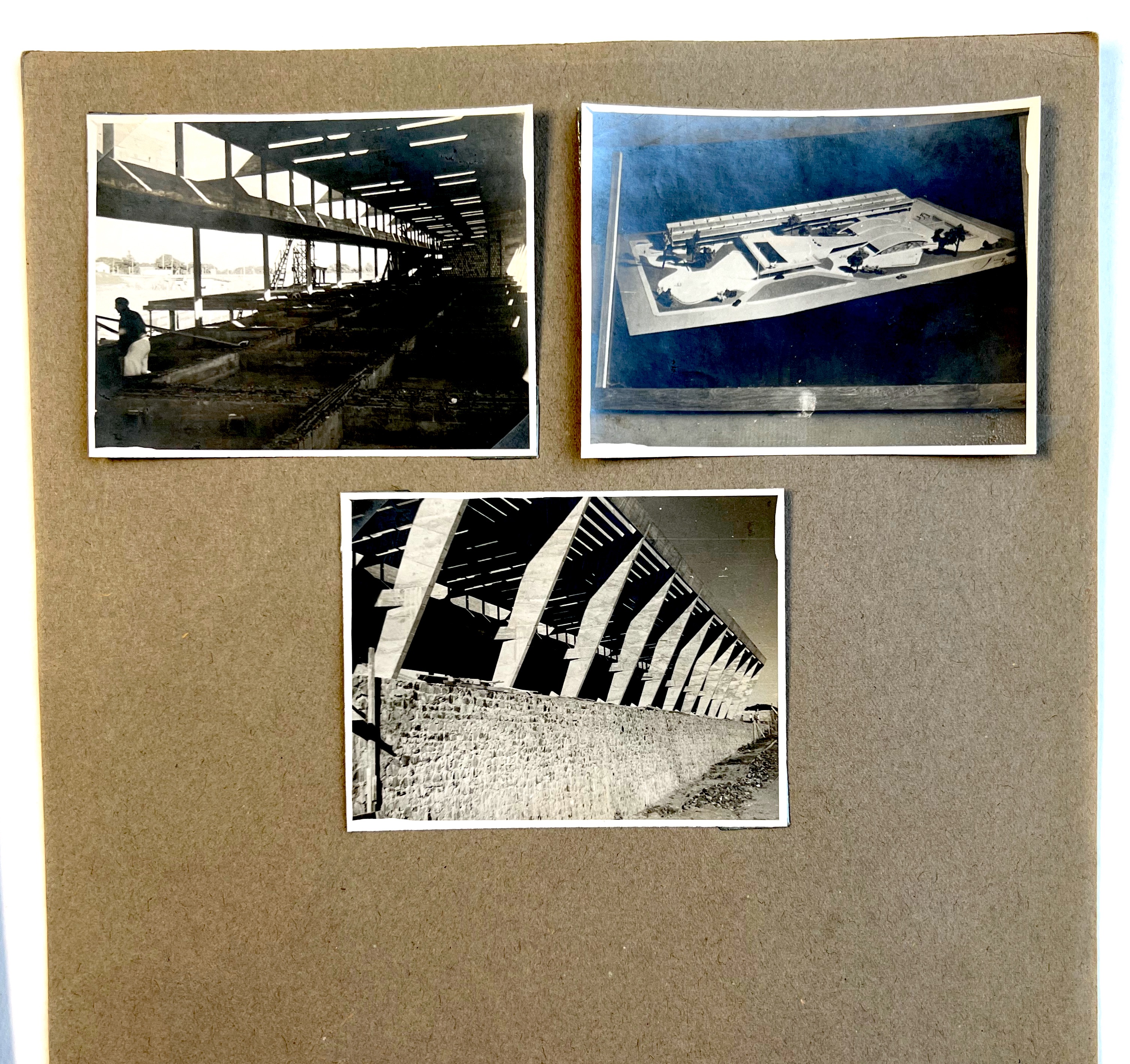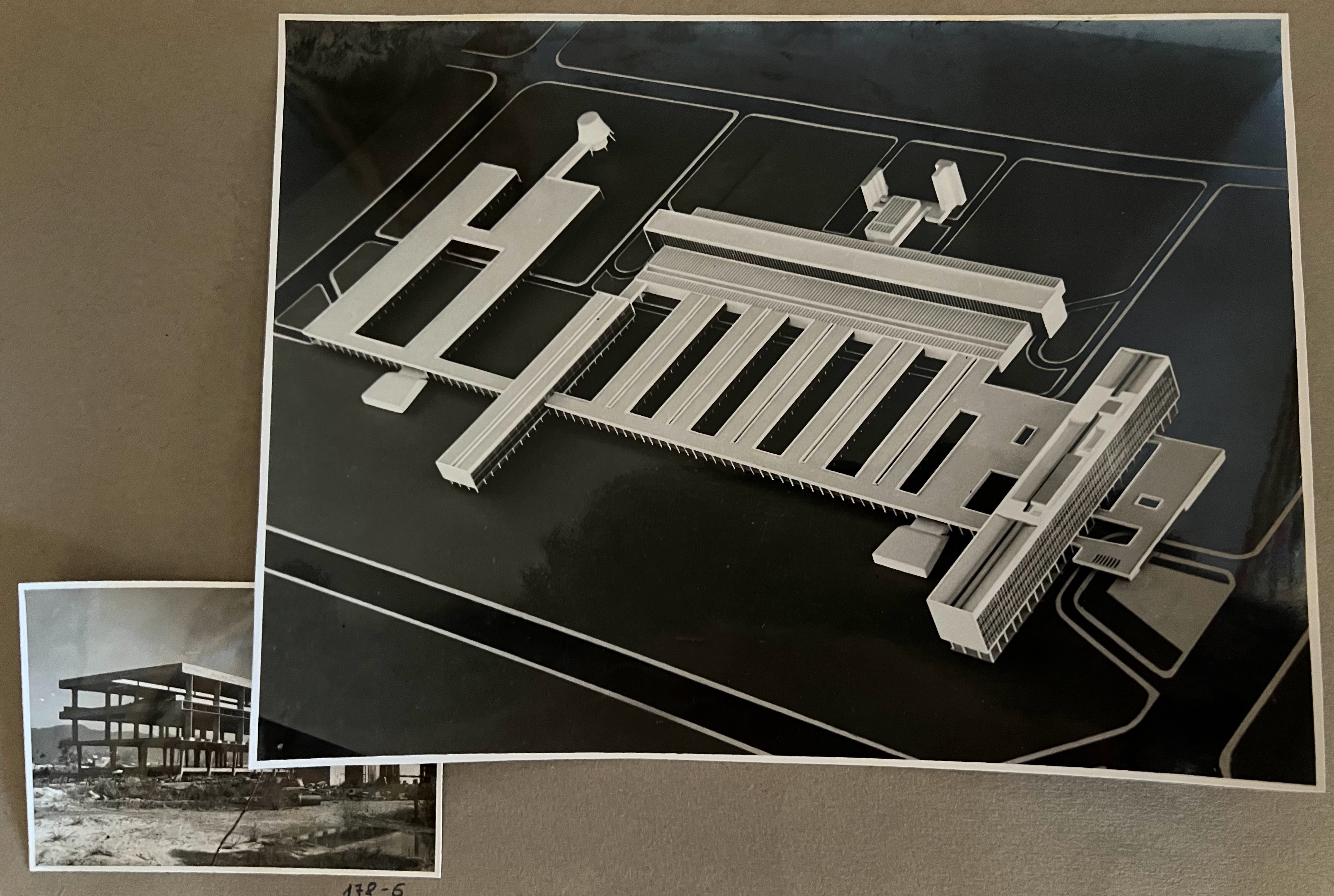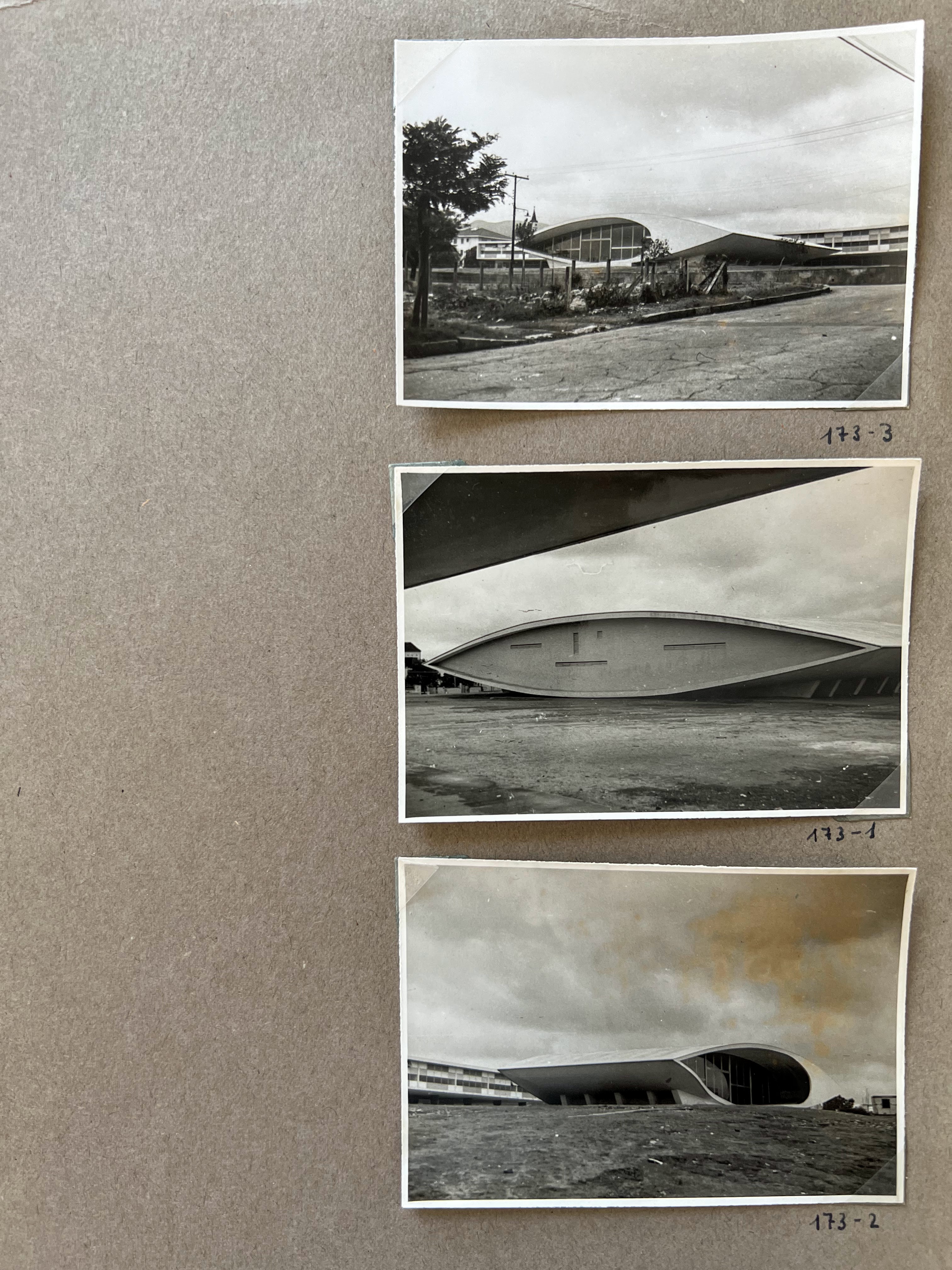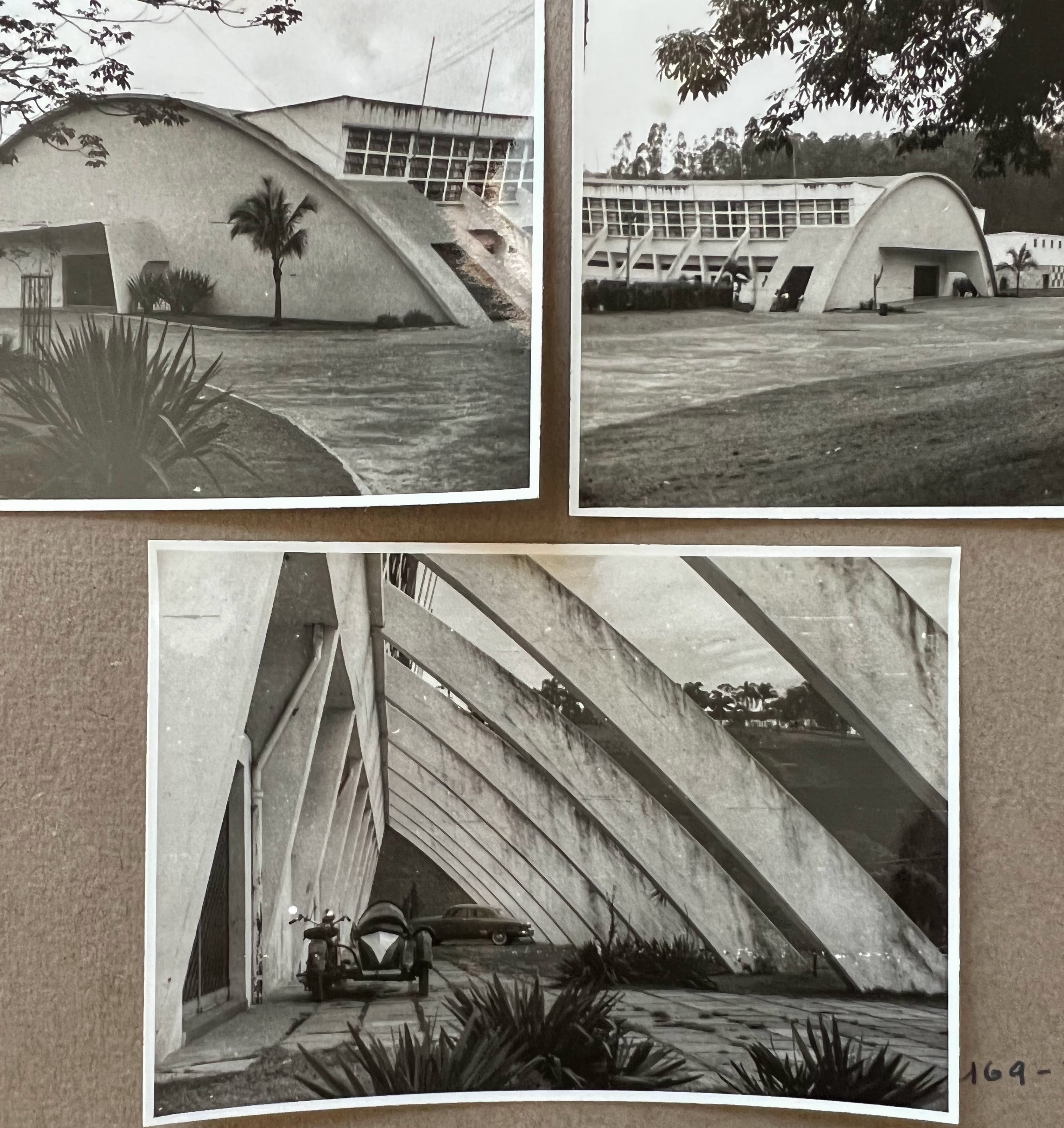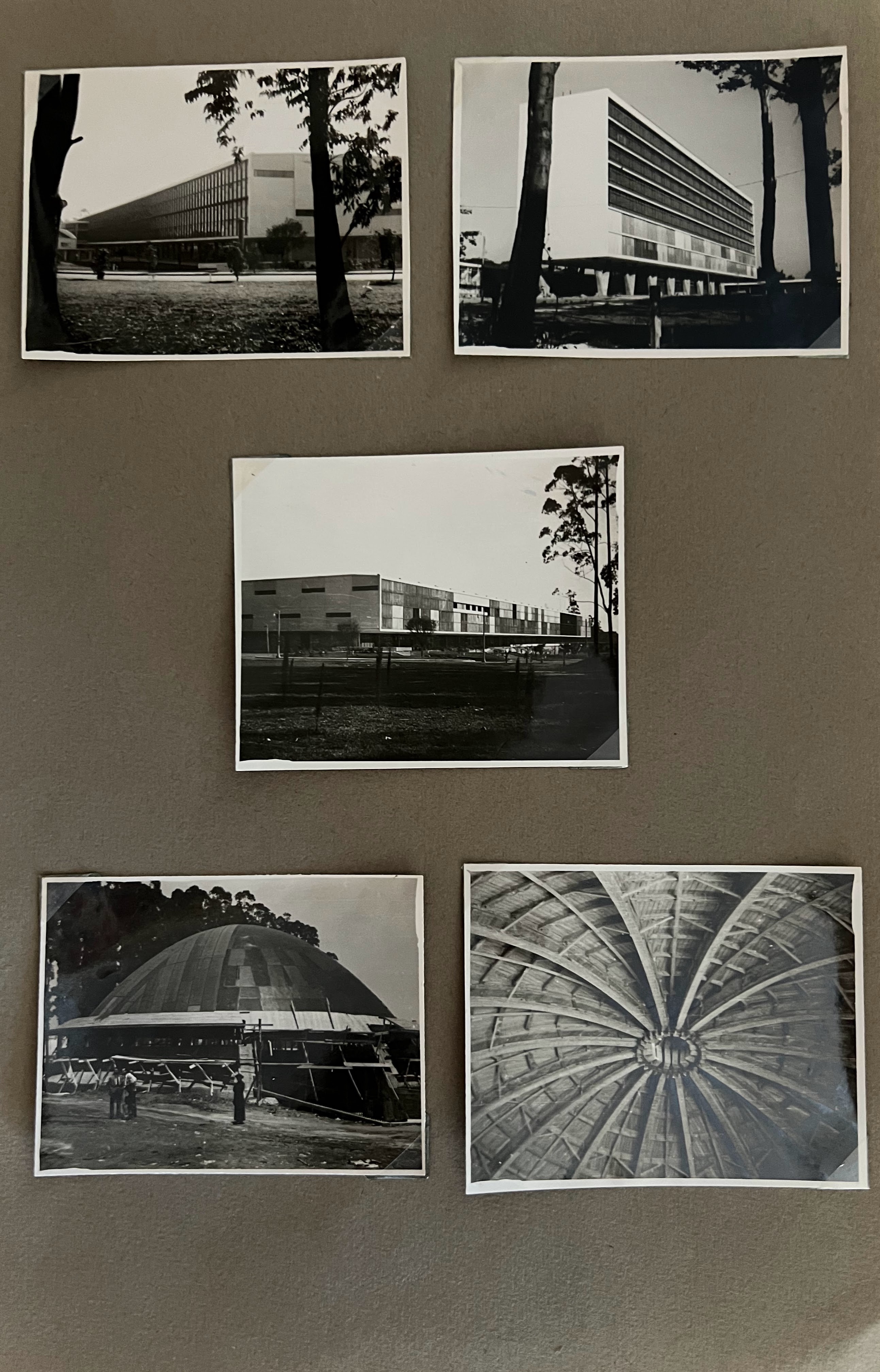GRAPH BOOKS: PRINTED MATTER FROM RADICAL ART AND SOCIAL MOVEMENTS.
FEMINIST HISTORIANS OF MATERIAL CULTURE.
75 Photographs of Modernist Buildings
ca. 1954-1960
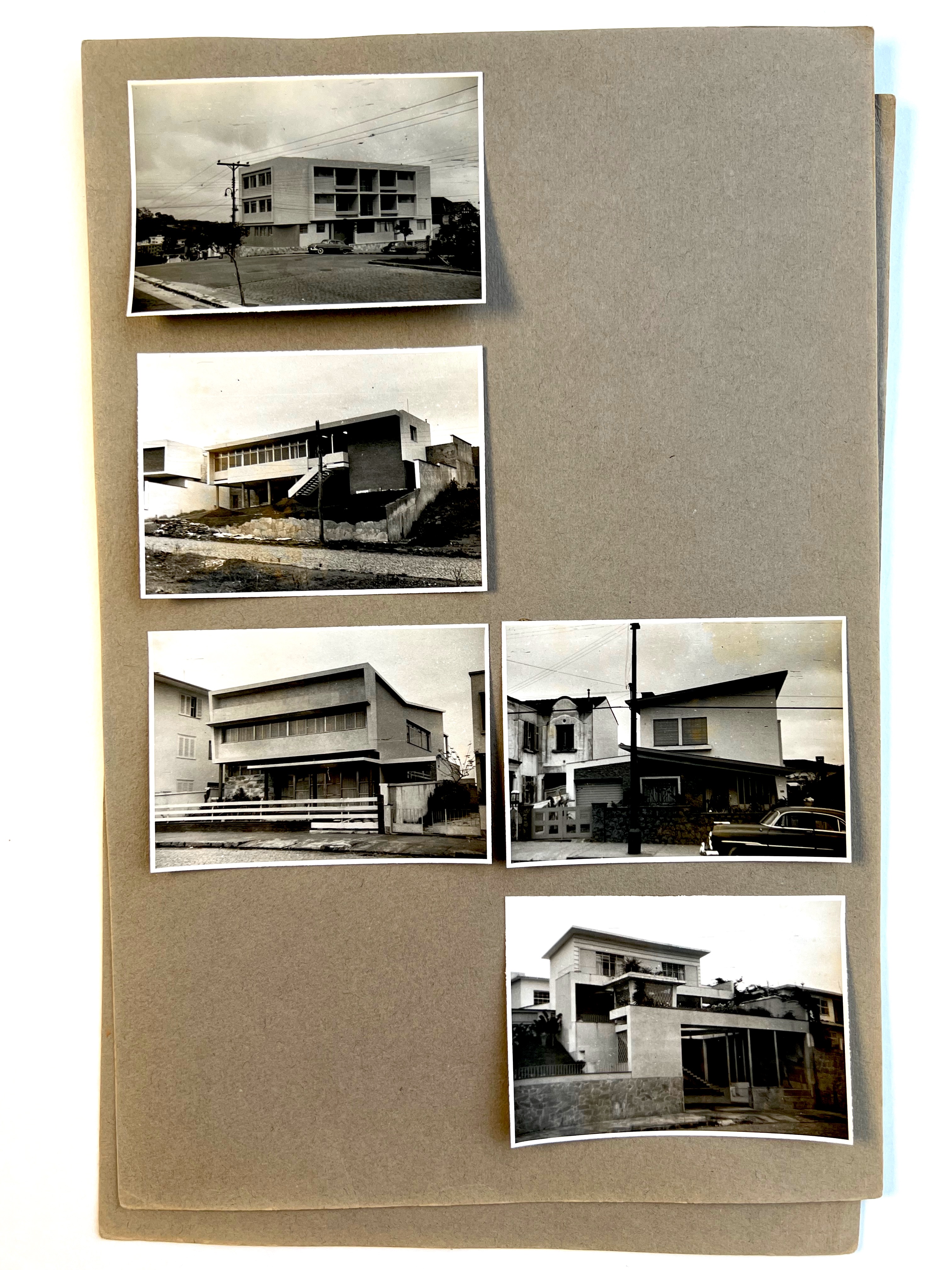
(Brazil) (Architecture) 75 Photographs of Modernist Buildings, ca. 1954-60. Gelatin silver prints, 71 approx. 9.8 x 6.5 cm, four larger, 24 x 18 cm., mounted, most on a single side or with corners, to 20 paper sheets. A few with manuscript numerical captions on the page, some with similar annotations verso. With two postcards tipped-in, one of Rio, the other of the planned campus at Pontifícia Universidade Católica. Most near fine, a few with small discolorations.
Collection of 75 images of Brazilian modern architecture, from the “first” modernist building in Rio de Janeiro, Oscar Niemeyer’s Palácio Gustavo Capanema, to the famed period of massive urban expansion under President Juscelino Kubitschek, including two Niemeyer projects in Belo Horizonte—the Auditorium of Colégio Estadual Central (1954) and the BEGME tower—as well as a number of examples under construction or recently completed, e.g. four photographs of Hospital Sul América da Instituição Larragoiti, by Niemeyer and Hélio Uchôa (1959), approx. 10 of the new Gavea campus of Pontifícia Universidade Católica (1955), and approx. five of of Jorge Machado Moreira’s Faculdade Nacional de Arquitetura Building at Federal University of Rio de Janeiro (ca. 1957), both largely unfinished projects based on Le Corbusier’s ideas about functional zoning. Includes four prints of architectural drawings, and at least three of architectural models on display, seemingly of Pontifícia Universidade Católica (PUC-RIO) and the proposed campus of Federal University of Rio De Janeiro, including grounds by Roberto Burle Marx. Another thirteen photographs of residential homes provide a fascinating look at the adaptation of these architectural vocabularies to vernacular buildings in Brazil, an architectural heritage now at risk as low-rise neighborhoods give way to high-rise development.
The photographs were taken over the course of 5 or 6 years of deliberate inquiry by an unknown researcher or professional. The sometimes informal compositions reveal glimpses of the unbuilt environments in which many of the projects arose: savannas, forests, and manmade islands; the architectural designs of PUC-RIO by Edgar de Oliveira da Fonseca (architect of Rio’s Metropolitan Cathedral) raise questions about a plan that is largely absent from conversations about Brazilian modernism in the 1950s, despite the fact that they strongly echo Niemeyer and Affonso Riedy designs.
A few photographs as yet unidentified.
SOLD
